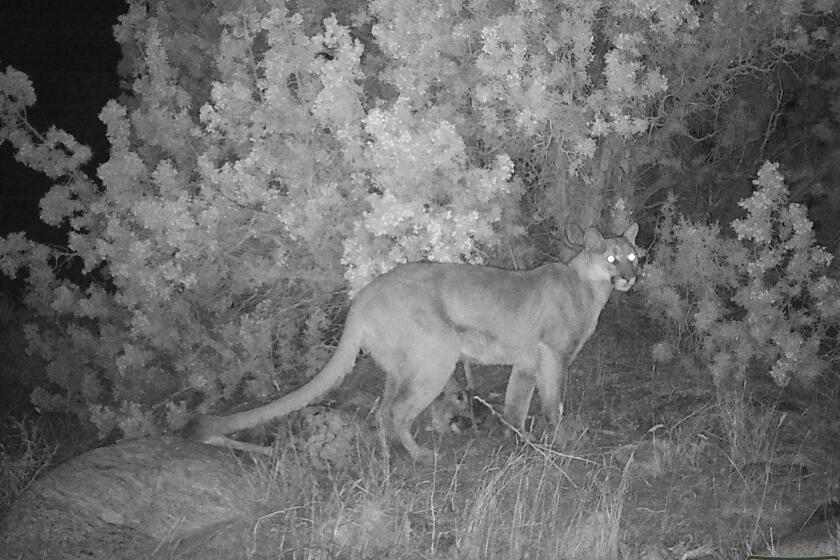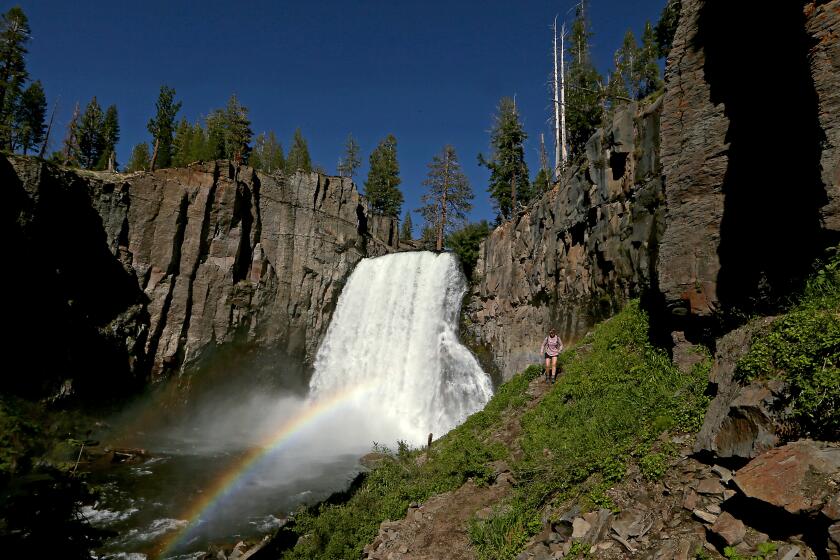After more than 100 years, gray wolves reappear in Giant Sequoia National Monument
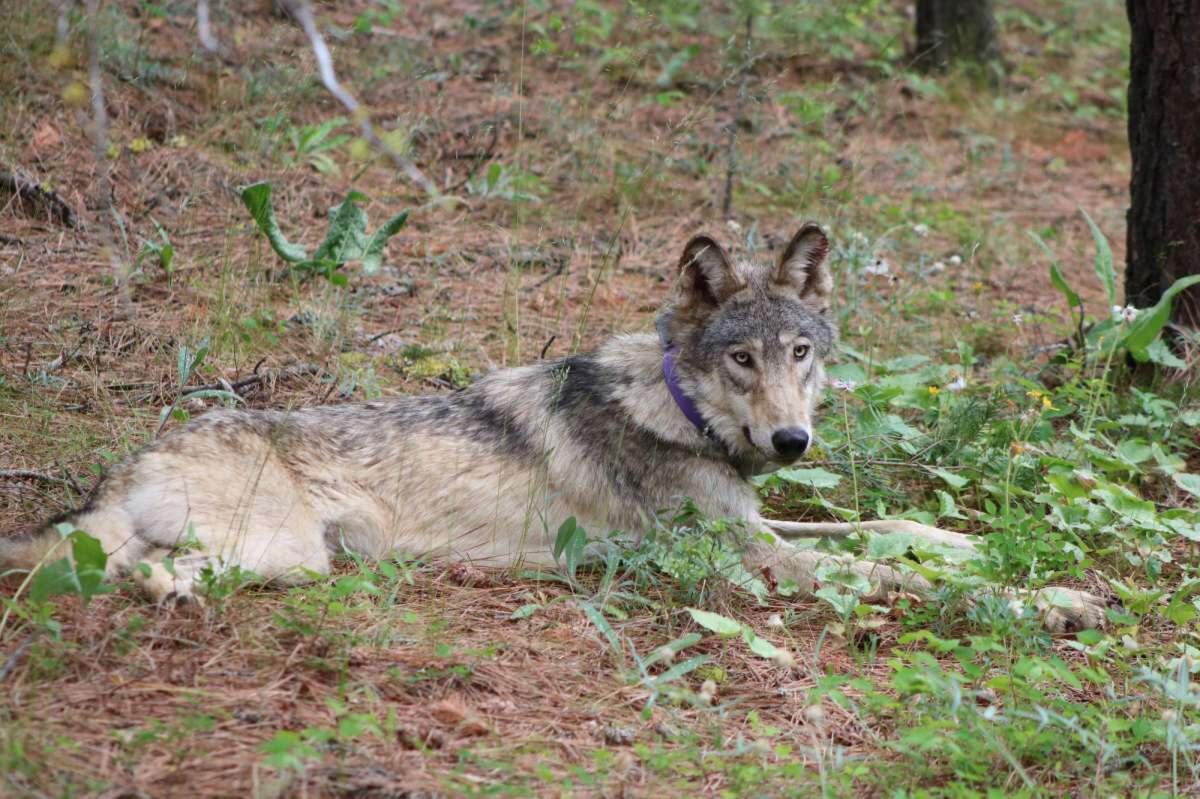
- Share via
GIANT SEQUOIA NATIONAL MONUMENT, Calif. — On the morning of July 6, Michelle Harris saw a huge canid with yellow eyes dash across a fire road lined with charred snags and giant sequoias blackened by recent wildfires.
The animal “paused, started to pace and made clipped barking sounds — like it was very worried about something,” recalled Harris, a biologist who was working on a restoration project in the area. “Then it tilted its head back and let out a really decent howl.”
“All I could think was, ‘It doesn’t look like a coyote, but it has to be, right?’ ”
Animal tracks and DNA analysis of scat and hair samples determined it was an adult female gray wolf, the leader of a previously undetected pack settling into Giant Sequoia National Monument — a region of the Southern Sierra Nevada that hasn’t felt a wolf’s paw in more than a century.
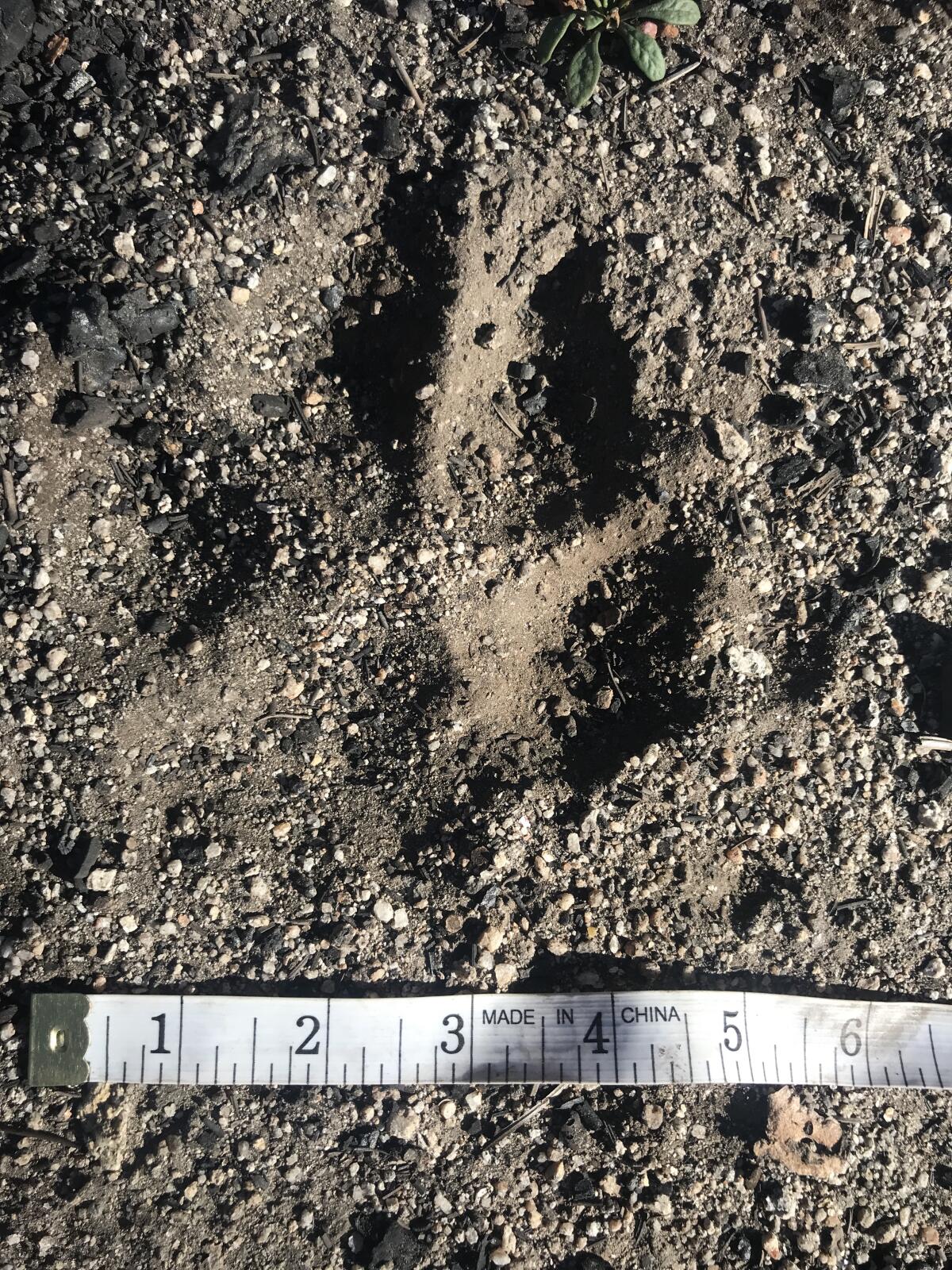
Now, biologists are cautiously optimistic that California’s southernmost wolf pack, which includes the female’s four offspring — two males and two females — will adapt to its new environs some 130 miles north of Los Angeles.
Yet the sudden appearance of the so-called Tulare Pack is already generating friction among Central Valley livestock owners and the managers of ambitious fuel reduction projects underway in and around areas of Sequoia National Forest and Giant Sequoia National Monument scorched by recent wildfires.
After two mountain lions who were transplanted to the Mojave Desert died of starvation, California wildlife officials have revised their relocation policy.
In a recent letter, a group of environmentalists urged the U.S. Forest Service to suspend post-fire logging operations in the region until it can “determine whether any activities associated with those and other projects could adversely affect the wolves.”
That’s because the environmental reviews for the projects have not considered the impacts of hand crews with chainsaws, bulldozers and trucks on endangered gray wolves and wolf habitat.
Environmentalists say their presence is vital to restoring the rhythms of life among countless other animal and plant species that evolved with them.
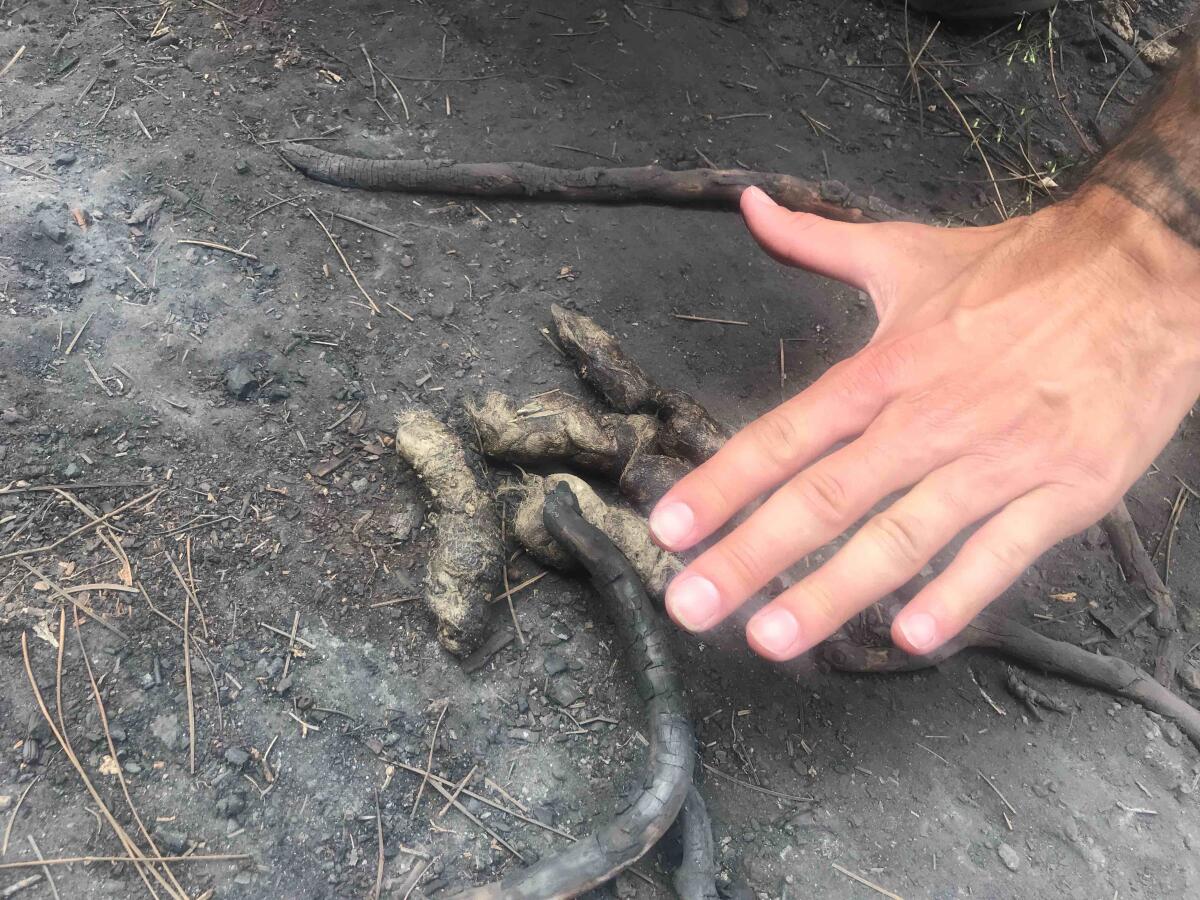
“Wolves rewild the landscape and that’s good not just for the wolves but for entire ecosystems,” said Amaroq Weiss, senior wolf advocate for the Center for Biological Diversity.
“California years ago laid out a welcome mat for wolves, and we can keep it there if we don’t get led astray by old fears and misconceptions,” she said.
The trouble is, wolves also kill livestock, raising concerns among ranchers.
“We believe it will be important for state wildlife officials to put a radio collar on one or more wolves in that pack to better understand how they are behaving,” said Kirk Wilbur, vice president of government affairs at the California Cattlemen’s Assn.
The Eastern Sierra Nevada has braced for snowmelt flooding since spring. Forecasters say the region’s waterways should return to normal by next month.
“We fully realize how risky and difficult that will be, but we need wolf data to help protect livestock, as well as wolves,” he said.
Wildlife authorities were reluctant to reveal details about where the wolves have been seen, fearing that it might make it easier for hunters to track them down and kill them.
“It’s a very small pack, but it has generated a lot of very mixed emotions,” said Jordan Traverso, a spokeswoman for the California Department of Fish and Wildlife.
“Wolf advocates want us to make things as hospitable as possible for them,” she said. “On the other hand, their return worries a whole bunch of people who run businesses based on livestock.”
In California, the gray wolf is listed as a state endangered species and cannot be killed unless in defense of human life.
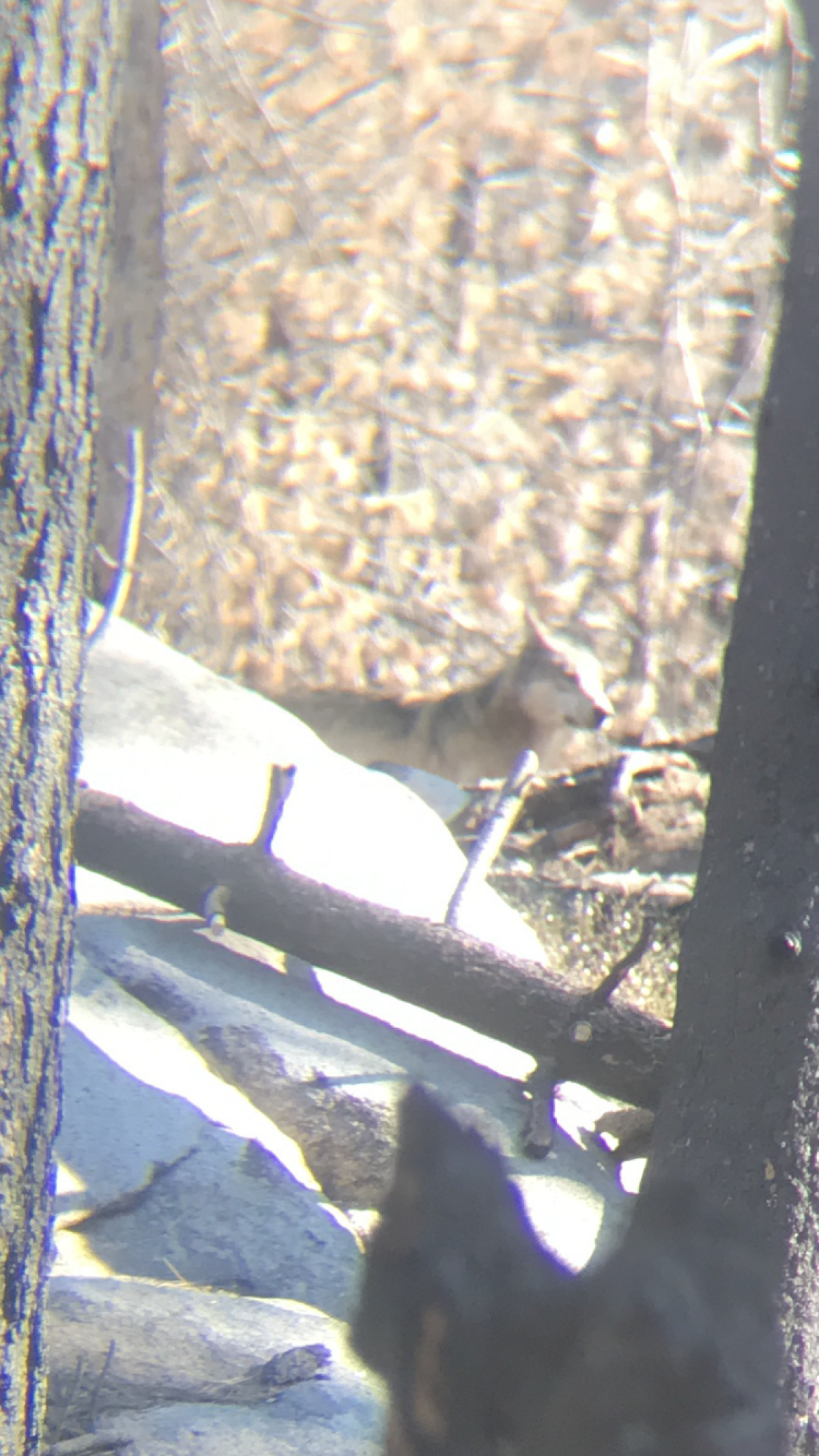
State wolf recovery provisions pay full market value to every rancher verified to have lost livestock in wolf attacks. Reimbursements are also offered for the purchase of nonlethal protection measures such as fencing and guard dogs.
Under a new “pay for presence” program implemented this year, ranchers can even be reimbursed for indirect impacts on cattle and sheep within a pack territory including wolf-induced stress that can result in reduced weight or breeding problems.
So far, there have been no confirmed kills of livestock in the region.
Before the organized wolf extermination campaigns of the 19th and 20th centuries, wolves thrived in nearly every region of North America north of Mexico City.
By the 1930s, the wolf population had been all but wiped out, their disappearance hastened by aggressive hunting by European settlers and then national programs to eradicate predators on public lands.
Once numbering in the millions, only about 7,500 are left in the lower 48, and as many as 11,000 in Alaska, where they are hunted as big game.
Their absence disrupted predator-and-prey relationships throughout the nation and resulted in a population explosion of deer and elk.
The fewer than two dozen wolves currently believed to be living in Northern California include the Lassen pack, whose territory covers portions of Lassen and Plumas counties; the Beckworth pack in eastern Plumas County, and the Whaleback pack in eastern Siskiyou County.
The status of seven all-black wolves discovered near Shasta in 2015 remains unknown. They have not been seen “following their implications in two livestock casualties and amid fears of poaching,” Weiss said.
Nine years after President Obama created the San Gabriel Mountains National Monument, park officials struggle to cope with hordes of visitors.
Then there was the epic journey of OR-93, a lone gray wolf that in late 2021 ventured from Oregon to the very edge of Southern California’s crowded suburbs in search of territory and mates.
California’s most adventurous wolf was found dead on the afternoon of Nov. 10 that year, near a frontage road running parallel to Interstate 5, about 50 miles north of Los Angeles.
A necropsy conducted by state wildlife authorities determined that OR-93 died from trauma consistent with a vehicle strike.
OR-93’s travels had signaled the potential return of a predatory force that some conservationists say would repair the out-of-balance wildlands and make them more stable and diverse.
DNA analysis confirmed that the adult female in Tulare County is a direct descendant of OR-7, which crossed the state line in 2011 to become the first known wild wolf in 90 years to make the Golden State part of its range.
In any case, gray wolves occupy a small part of their historic range. Scientists say a comprehensive recovery plan encouraging their return is crucial to returning ecological stability across thousands of square miles of still-wild habitat.
Among them was ecologist Chad Hanson, who, in an interview, said the wolf pack has become, of all things, the beneficiary of wildfires that jump-started new generations of nutritious grass and shrubs that attract deer they prey on.
“Higher ungulate abundance provides prey for wolves,” he said. “Logging reduces habitat for deer, adversely impacting endangered wolves.”
That kind of talk leaves some federal forest managers and timber industry advocates quietly seething.
But Harris, 28, worries over the outcome of what is shaping up to be a contest for dominance between two top predators, Canis lupus and Homo sapiens.
“I haven’t noticed any fresh evidence of the pack since July,” she said, “There’s been a lot more activity in the area since then. Maybe they’ve moved to a quieter place with room to roam.”
“Hopefully,” she added, “they’re taking down deer instead of cows and sheep.”
